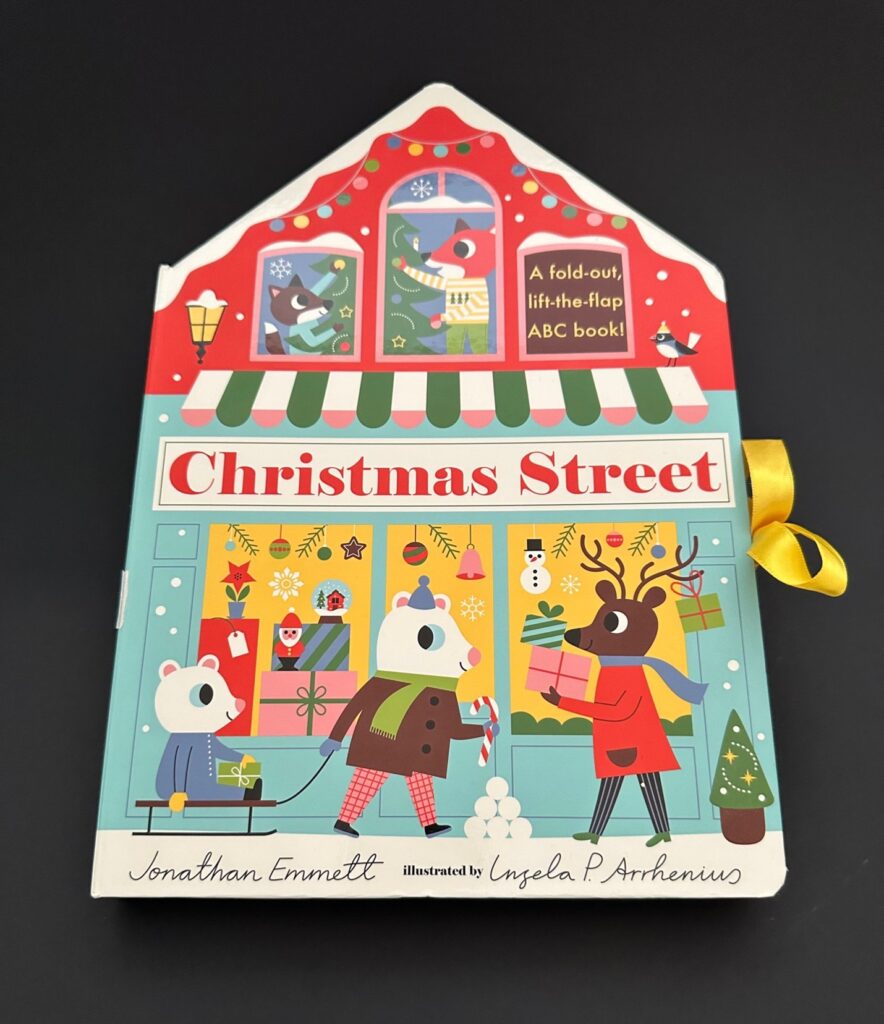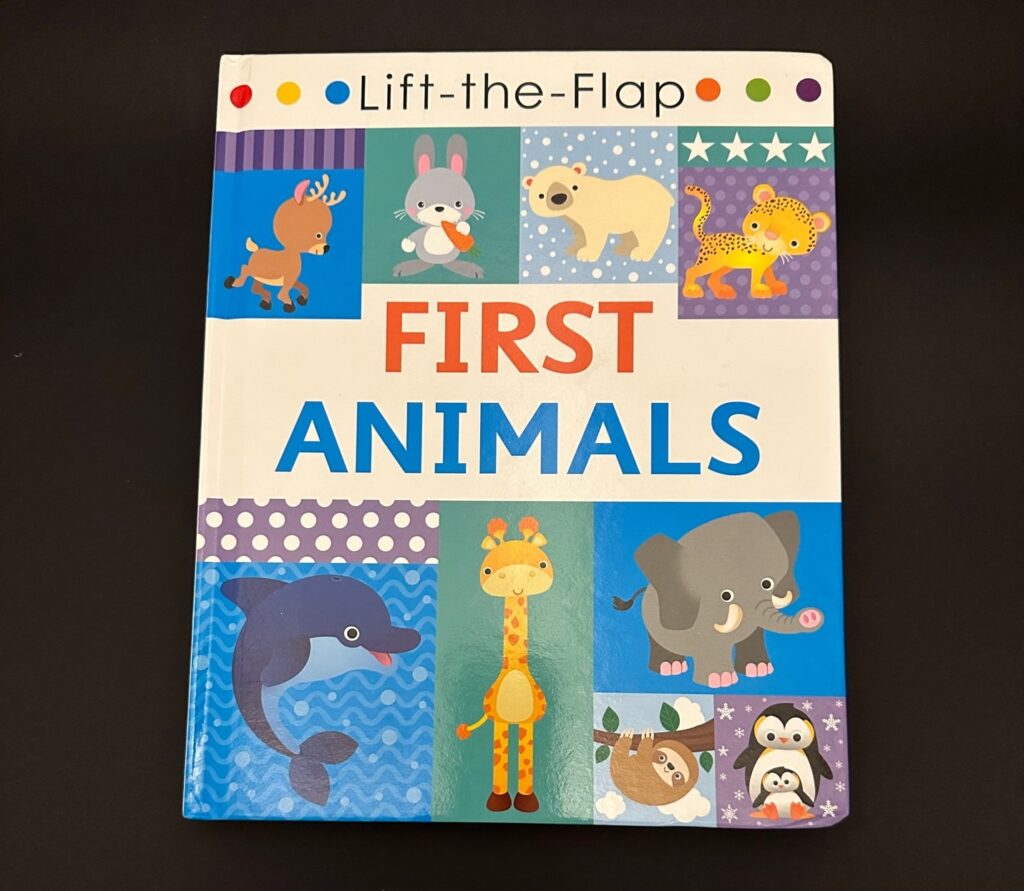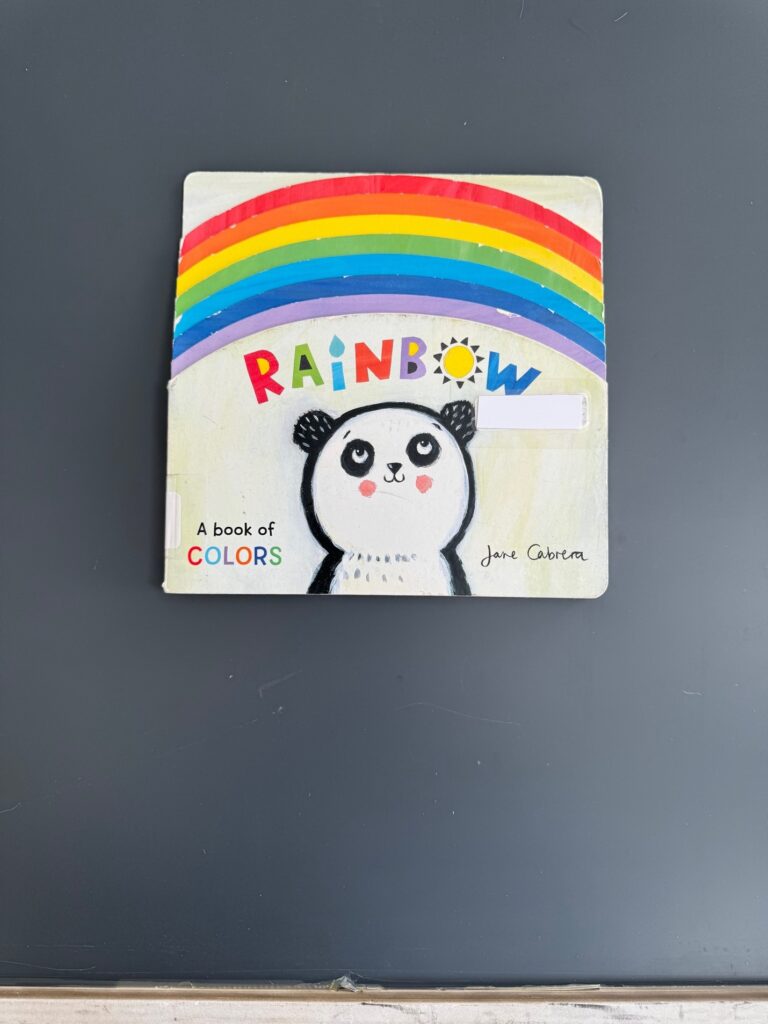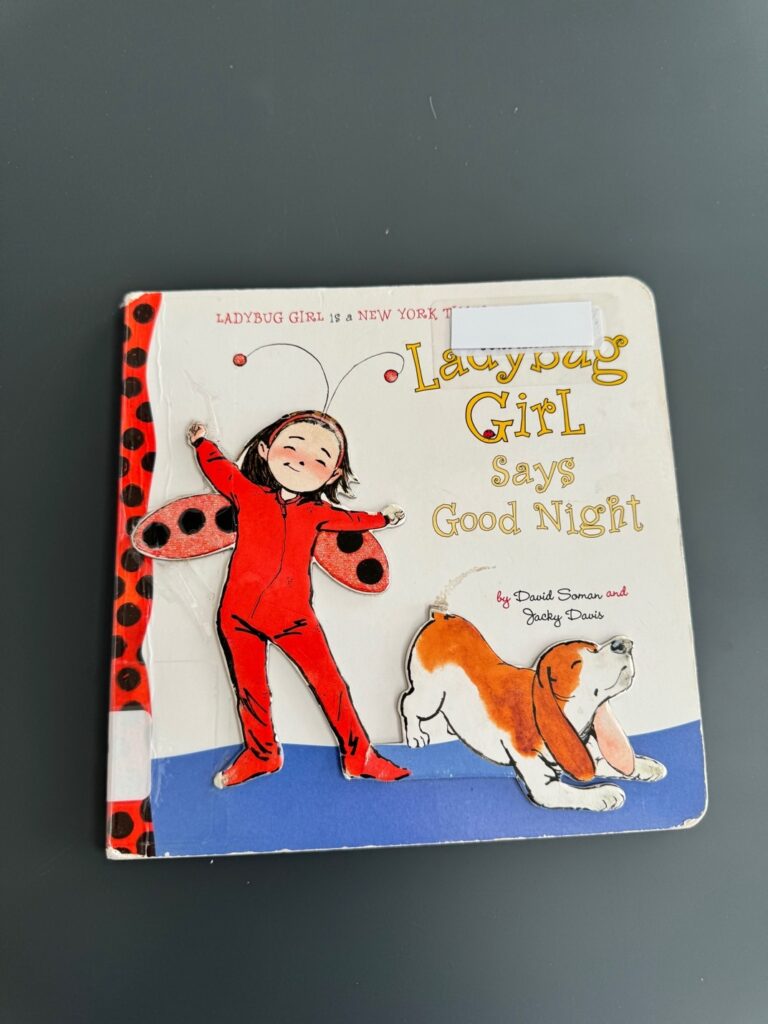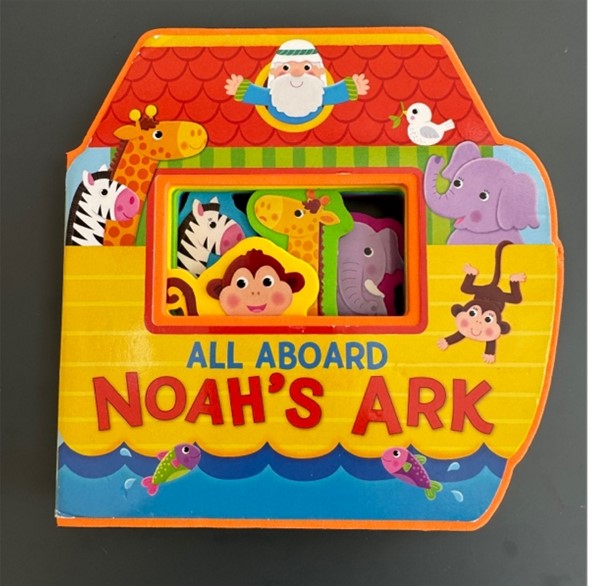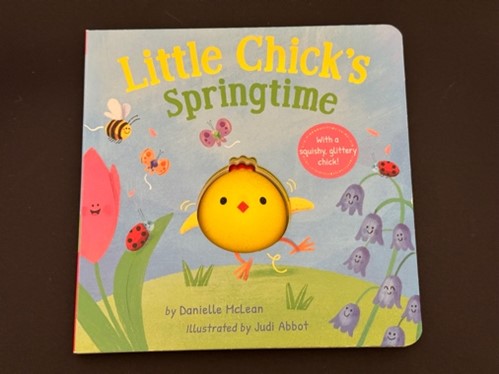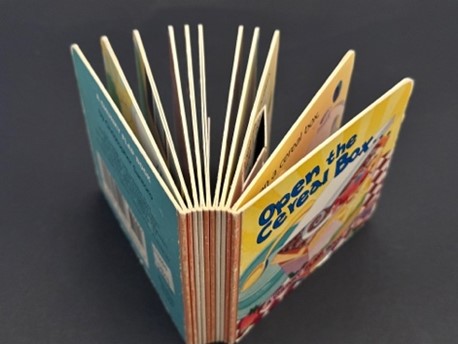This book has a number of distinctive. Firstly, as you can see, it’s got a printed hard case wrapped cover; same style as any hardback case-bound book. The corners are rounded. Another distinctive is that the interior is a board book but with unusual distinctives, the panels are not glued together as a conventional board book. Opening the book up you see there’s a number of “accordion,” folds. To produce this job we used our 40 inch die-cutter, die-creased the sheets to produce five panel sections. At least a portion of them have been die-cut, which is simply part of the creasing, and the die-cutting before the folding. The back panel is full surface, glued to the inside back cover. As indicated both covers are full surface lined, when the covers is closed, you can see glued to the inside of the front cover and in the back cover is the yellow ribbon. It is to be tied for children. Very durable, many ways, unique, something engages kids. The kids market for books is growing, much quicker than other books for any ages.
This is an oversized board book which has been cased in. We produce these books like a normal board book. What is different in this situation is that some of the panels were die-cut and were not full surface glued but rather patten glued. This allows the child, using the book to lift panels, open doors and open circles. This book is very interactive for children, and I’ve noticed that in all the bookstores that I browse through the kids section is growing.
This is a board book. The first picture appears to be a normal board book. When you open the book, the purple panel is shaped in a half moon. As each panel opens, they have circle rises. When the final page is open the back panel is a square. We produce a book like this with the same machine that we die-cut the covers of a hardback case bond book
This is a normal board book square spine, but what I’ve tried to do with the picture is to show that the little girl and the dog are rather a thick die-cut piece that have been glued in the appropriate place on the cover. This is effective. It’s a board book for kid and kids love touching things. Kids love puppy dogs. This book to a child would find inviting. On occasion when you think something that is somewhat thick, 80pt or 100pt, that has to be mounted on a cover after die-cutting, we can help.
At first glance, this is a board book and yes, it is in a sense distinctive. However, it has a cut window as indicated by my fingers. What is distinctive about this book is that between the glued panels are coloured pieces of rubber. Usually, to make a board this thick we would insert coloured stained board, e.g. 200-point hundred point depending what the client requested, in this situation the thickness is rubberized. I would suggest the cost of the rubber versus cost of board is multiple times greater. In this situation the rubber had to be ordered as per colour or in the situation of a board book like this we simply insert a glued e.g 150-point board. We simply stain the edges of the board whatever colours required by the client. Yes, it’s distinctive. I would suggest extremely expensive and there’s alternative ways to make the product at a much much lower price.
These five pictures are basically a normal run of the mill board book with the exception that each page has a drilled hole, and the inside back cover is a hand glued rubber toy, which can be pushed or squeezed, with a turning of each page. Again, as I’ve said before, the market grows for board books for children is growing exponentially. Yes, most of it comes from China, but we’re seeing more and more publishers through their local printer, printing a short run to see how it does in the market. If it takes off, it might go back to China or maybe it’ll stay in America.
Some distinctions with this particular book are firstly, the spine is exposed; four pages with no wrap. Secondly, it’s been PMC shaped but thirdly, some of the panels can be open. The doors can be different sizes and each panel can go from side to side or top to bottom. The doors could be shaped. So, if your clients are talking about a board book, this is an idea that might tip the scale in your favor.
Board Books
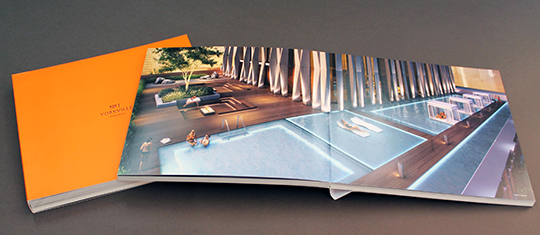
Board Books are the feature of this week’s email. Also called “photo albums” or “children’s books,” this style of book binding is unique because pages are glued together back-to-back. With Board Books, think “spreads” instead of “pages”.
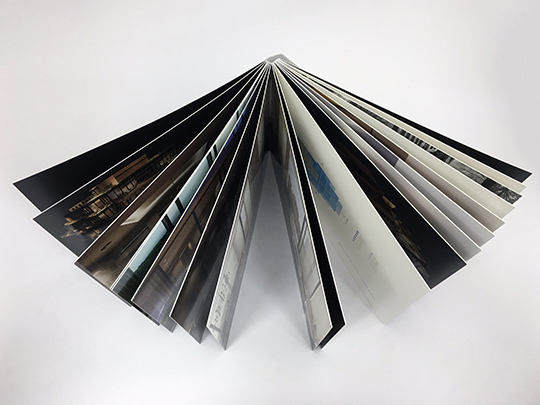
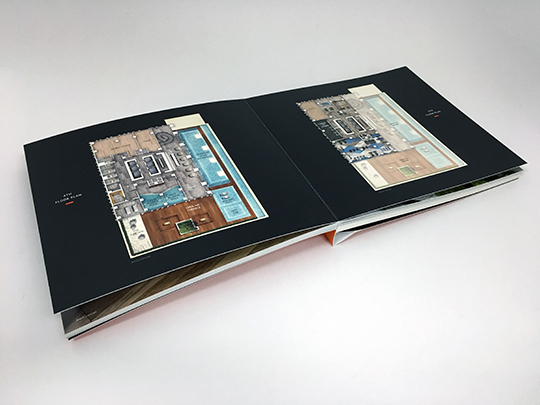
The main advantage of a Board Book over other types of book binding is the uninterrupted spread across both pages of a book. To achieve this, the paper is printed on one side, cut to a 4-page configuration, die-creased in the centre, folded as 4-pagers (print side in), collated and then the sections are inline glued together. Traditionally, a piece of board was glued in between each section, hence the term “Board Book.” Board Books do not, however, have to be heavy, thick books.
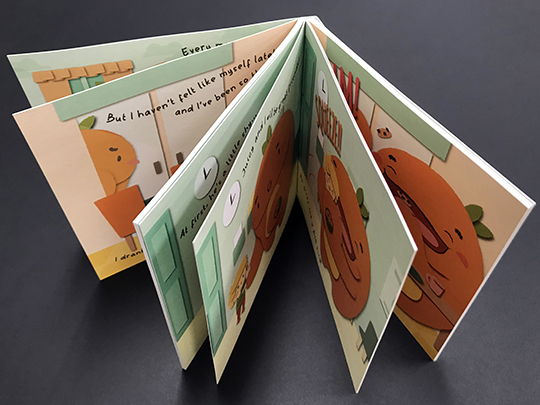
For clients that want a very sturdy book, the heaviest stock we can use is 25pt, which results in 50pt when the pages are glued together!
While this type of book might be called a Board Book, we can use stock as light as 60lb offset! This means that Board Books can also be a great option for clients who care about having uninterrupted images and copy but don’t want thick pages.
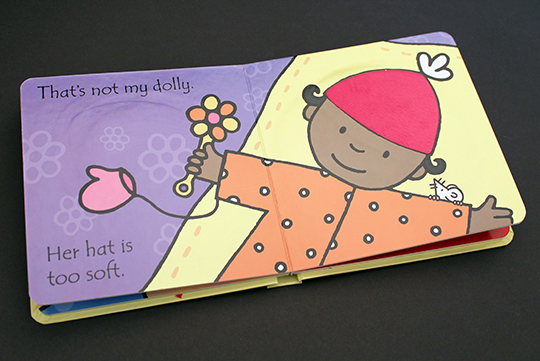 We can produce Board Books that are up to 3” thick and in sizes up to 14” x 18” (binding on the 18”). We can even finish Board Books with flexible covers like perfect bound books are hard covers like casebound books.
We can produce Board Books that are up to 3” thick and in sizes up to 14” x 18” (binding on the 18”). We can even finish Board Books with flexible covers like perfect bound books are hard covers like casebound books.
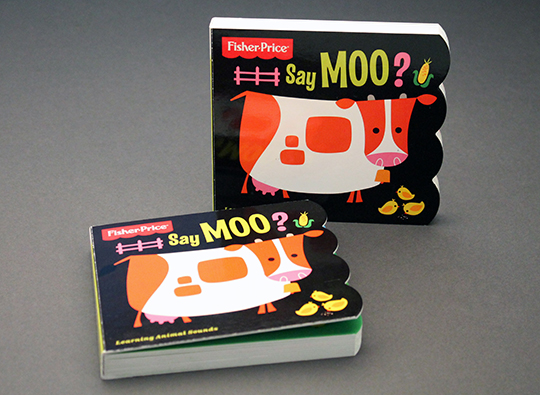
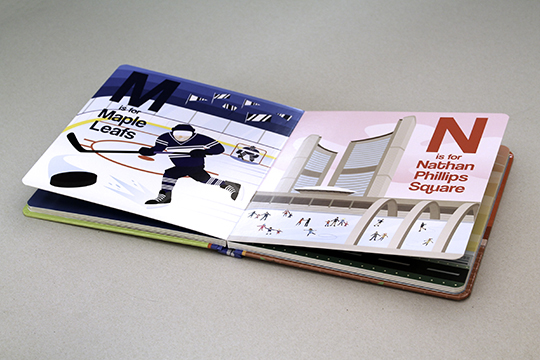
Like the books shown above, some Board Books can be PMC/high diecut into custom shapes or stepcut!

